Maintaining a wildlife pond is a delicate task that requires a balance between human intervention and allowing nature to manage itself. Your approach should ensure that the ecosystem remains healthily balanced, which in turn benefits not only the pond’s inhabitants but also the local environment. Regular observation is key; to help you maintain the natural dynamics of the pond.
Cleaning your wildlife pond doesn’t have to be overwhelming. It involves assessing the water quality, managing the vegetation, and caring for the wildlife. By planning your cleaning strategy and carrying out the cleaning process thoughtfully, you can enhance the pond’s overall health. Doing so will help support the biodiversity in your garden and create a thriving habitat for local wildlife.
At Ponds by Michael Wheat, we specialise in building all kinds of aquatic habitats, including wildlife ponds, swimming ponds and koi ponds. Keep reading to learn more about wildlife pond cleaning and how we can help.
Assessing the Wildlife Pond’s Current State
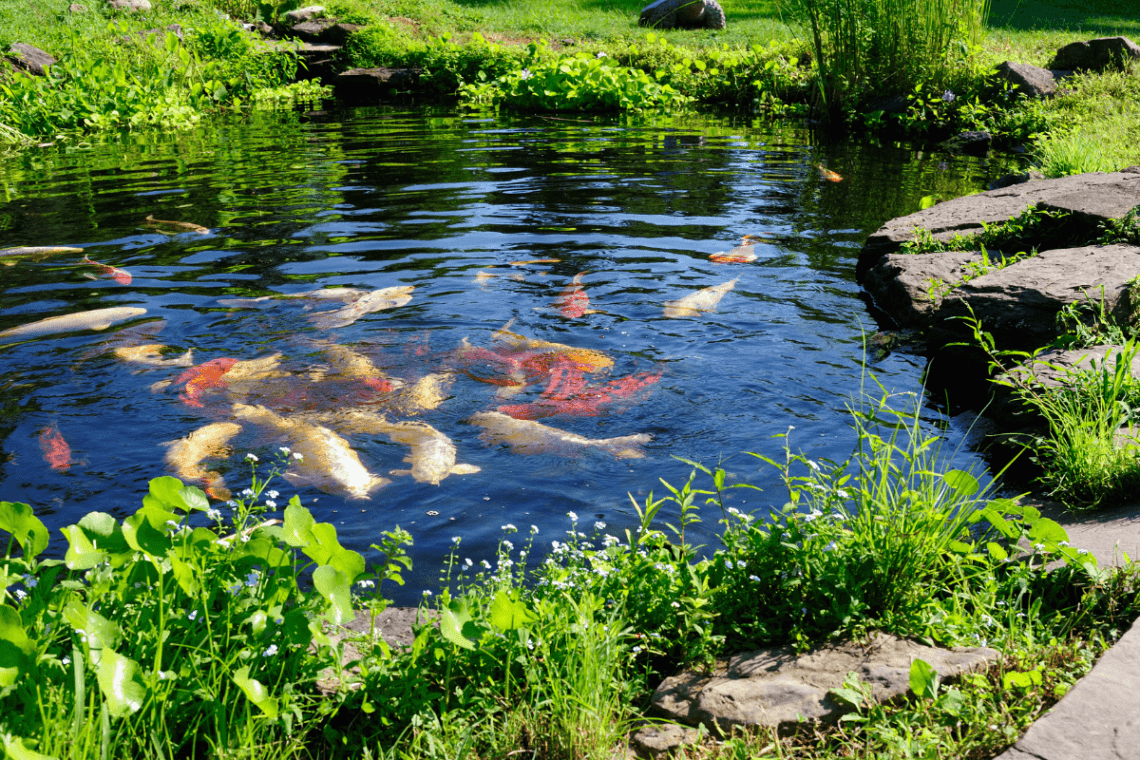
Before diving into the maintenance of your wildlife pond, it’s crucial to assess its current condition. Focussing on water quality, the presence of invasive species, and the health of resident flora and fauna will guide your subsequent cleaning steps.
- Evaluating Water Quality: Examine the water in your pond for signs of poor quality, such as excessive algae growth, which could indicate a nutrient imbalance. You can use a pond test kit to check levels of ammonia, nitrite, nitrates, phosphates, oxygen and pH, which are key indicators of a healthy aquatic environment.
- Checking for Invasive Species: It’s important to identify any invasive species of plants or animals. They can outcompete native species and upset the ecological balance. If you spot unfamiliar plants or aggressive animal species, determine the best course of action to remove them safely.
- Assessing Plant and Animal Health: Inspect the plants around your pond, noting any that appear diseased or unhealthy. Similarly, observe the amphibians, insects, fish, and birds that frequent your pond. Healthy populations are indicative of a well-balanced wildlife pond, while any signs of distress could point to underlying issues.
Planning Your Cleaning Approach
Before diving into the task of cleaning your wildlife pond, it’s crucial to plan effectively. By determining the optimal season for cleaning, identifying the right equipment, and creating a robust pond maintenance schedule, you ensure the health of your garden pond and its inhabitants.
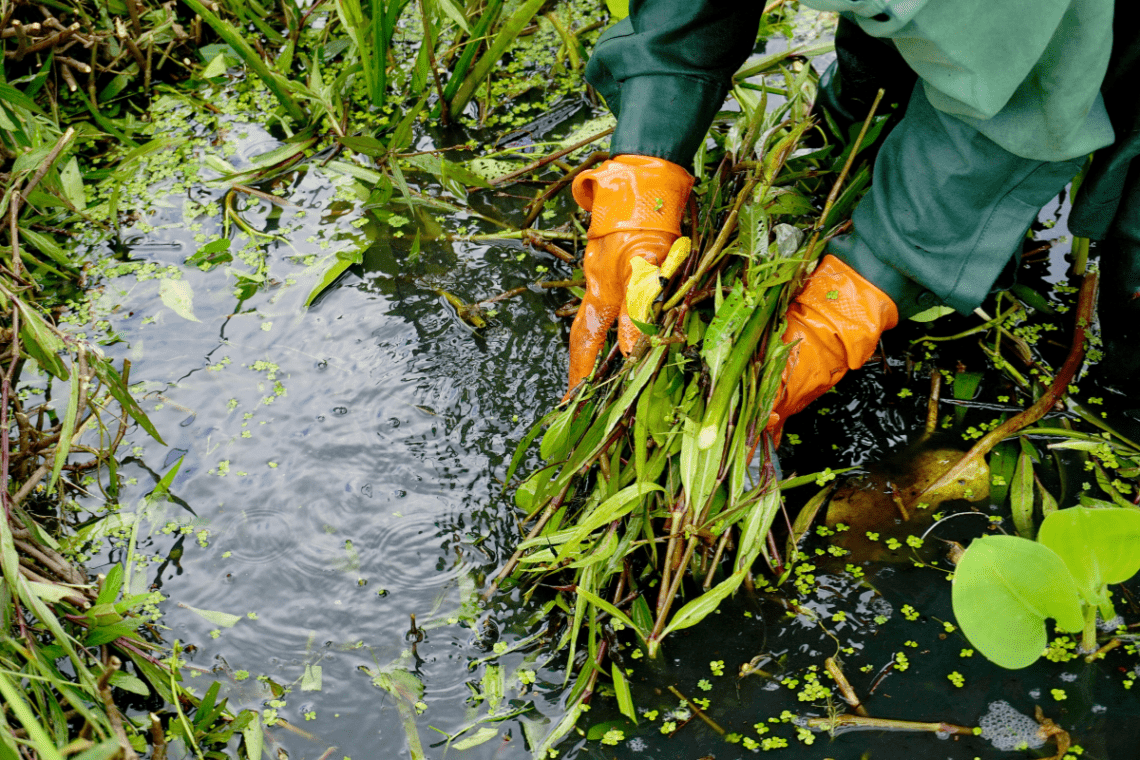
Determining the Best Season for Cleaning
Late Autumn/Early Winter – Late Winter/Early Spring typically marks the ideal time to clean wildlife ponds. It’s the season when aquatic life is less active, minimising disturbance to the ecosystem.
Autumn can also be suitable for removing fallen leaves and debris, but be cautious as many species are preparing for winter. It’s wise to avoid major cleaning during summer and winter, when wildlife is most active, and conditions are less favourable due to growth and hibernation periods, respectively.
Identifying Suitable Equipment
For effective cleaning, you’ll need a few key pieces of equipment. A pond net is essential for skimming debris off the water’s surface and should be gentle on wildlife. In deeper areas, a pond skimmer can capture floating waste before it sinks. For more thorough cleaning, consider a pond vacuum to remove sludge from the bottom, but use it sparingly to preserve the natural balance of the pond.
Creating a Maintenance Schedule
Keep your pond in top condition with a regular maintenance schedule. Bi-weekly checks during active months will suffice for skimming and visual inspection. Quarterly deep cleans are recommended, preferably during the milder seasons of spring and autumn.
Adjust your schedule according to the pond’s condition, local climate variations and the specific needs of pond inhabitants. Maintain a record to track the cleaning routine; this helps in ensuring the ecosystem’s health and provides insights for future maintenance.
Starting the Cleaning Process
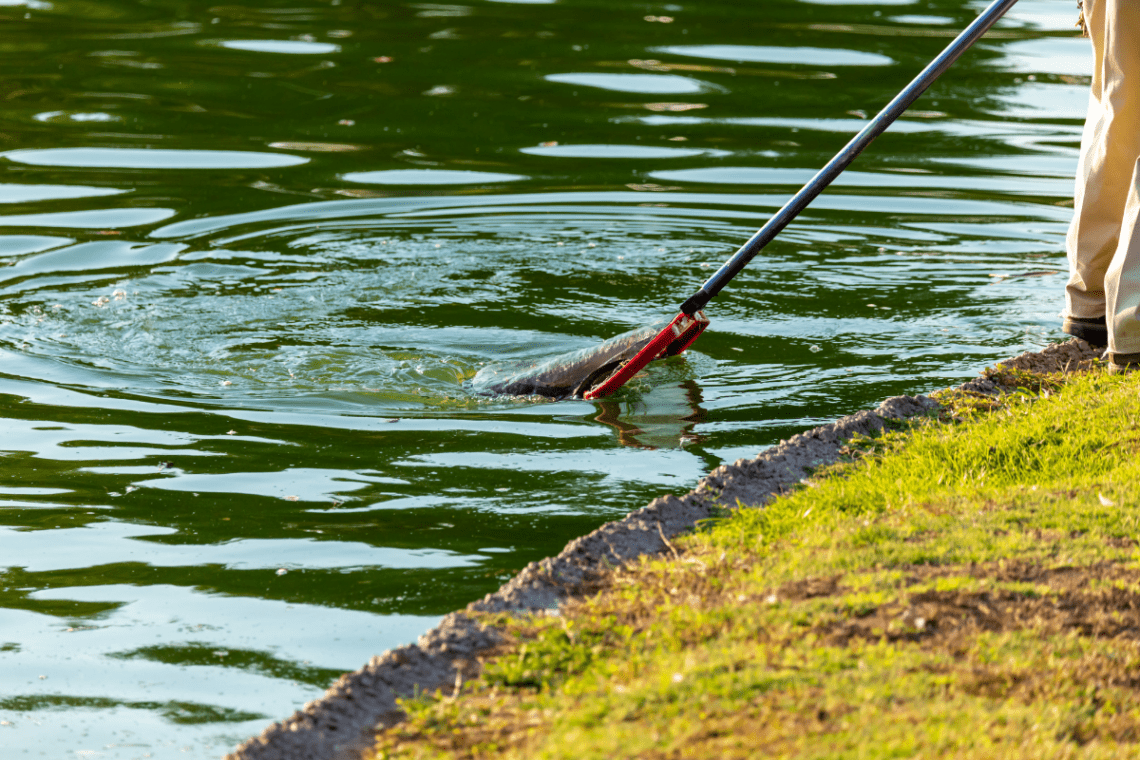
Revitalising your wildlife pond begins with a thorough clean that addresses overgrowth and water quality. By tackling algal blooms, debris, and plant life, you can maintain a healthy environment for pond dwellers.
Step 1: Removing Algae and Debris
Your initial step should involve systematically removing algae and debris. Algae can grow rapidly, leading to oxygen depletion. Use a pond rake (not in a linered pond) or net to gently clear the pond surface of floating algae and debris. Be careful not to disturb any wildlife or disrupt the pond bed.
For submerged algae and residue, consider using an algae brush and a pond vacuum which can remove waste without causing too much disturbance. It’s essential to dispose of the collected algae and organic matter responsibly, away from the pond to prevent nutrients from leeching back into the water.
Step 2: Pruning and Managing Pond Plants
Pond plants are vital for creating a balanced ecosystem but can become overgrown. Prune dead or fading foliage to prevent decay, which can fuel further algae growth. Aim to maintain a diverse range of plant species that includes submerged, marginal, and floating vegetation to provide habitats and clean the water naturally.
Regularly prune to ensure that at least half of the pond’s surface remains clear. This will allow plenty of sunlight penetration and encourage gas exchange, crucial for the health of your pond.
Step 3: Controlling Water Levels and Quality
Maintaining proper water levels and quality is essential for your wildlife pond’s ecosystem. Top up your pond with tap water cautiously, as it can introduce chemicals like chlorine and alter the water hardness. Use a water conditioner when adding tap water to neutralise harmful substances.
Monitor your pond’s water level, especially during dry weather, to ensure that it remains consistent. Subtle changes in depth can affect submerged plant life and the overall health of the pond. Regular testing of the water quality can alert you to imbalances early on, allowing you to take corrective actions swiftly. Water levels of wildlife garden ponds will naturally fluctuate, it’s just about paying attention.
Pond Maintenance Packages – Let Us Do the Hard Work
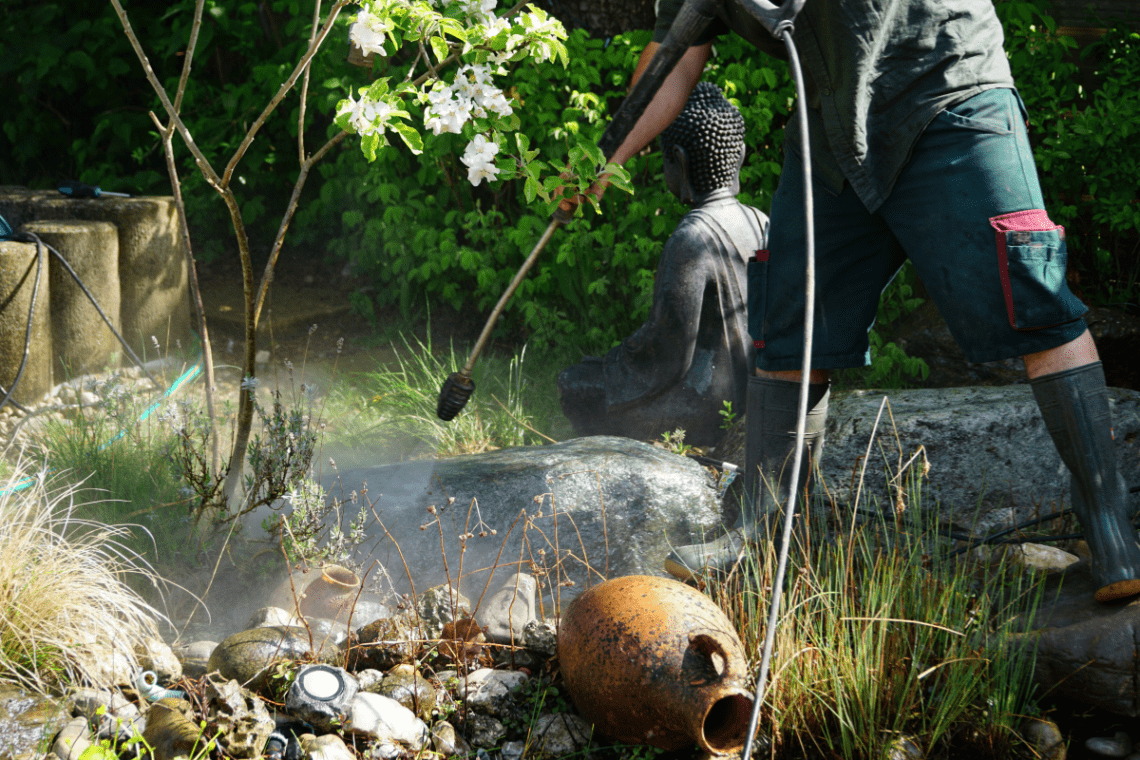
Maintaining a wildlife pond is a delicate task, requiring specific expertise and regular attention. At Ponds by Michael Wheat, we understand this intricate balance and offer comprehensive pond maintenance packages, tailored to suit various needs and preferences.
Our services are designed to ensure your pond remains a thriving habitat for wildlife while also maintaining its aesthetic appeal. We provide three main packages: Platinum, Gold, and Silver, each offering different levels of care and frequency of visits, ensuring there’s an option that fits your specific requirements. Choose the package that best suits your needs, and let us take care of the hard work.
Support When You Need It
All our packages include Monday to Friday helpline support and emergency call-outs for equipment issues, ensuring that you have expert assistance whenever needed. Our dedicated team, celebrated for their meticulous attention to detail and exceptional customer service, is committed to keeping your wildlife pond in pristine condition throughout the year.
We specialise in maintaining lined ponds and do not offer services for clay or natural ponds. If you have a leaking butyl liner, we provide full pond renovations including a new liner.
Caring for Pond Wildlife
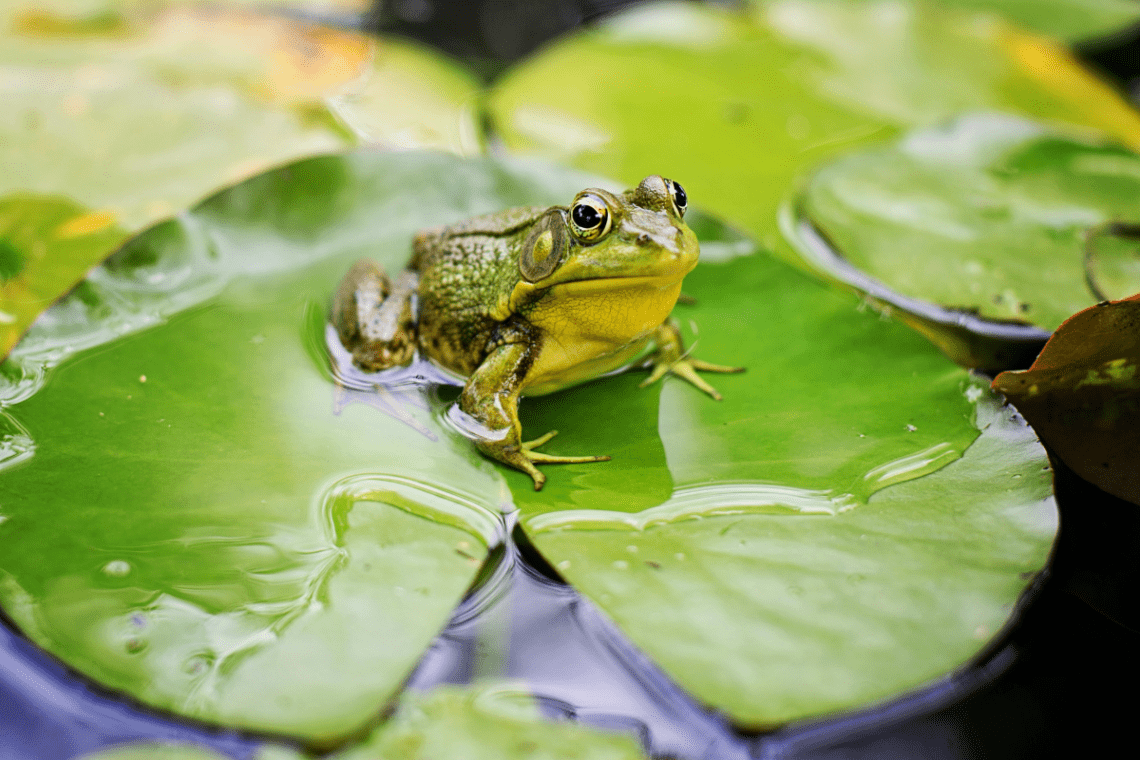
When maintaining a good wildlife pond, your aim is to minimise disruption to the existing ecosystems while enhancing conditions that favour the growth and breeding of various species, from amphibians to dragonflies.
Minimising Disturbance to Habitats
To protect the delicate balance of your wildlife pond, you must approach maintenance activities with care. Fish, frogs, and other amphibians rely on stable environments, so when you clear vegetation or silt, do so gradually and outside of breeding seasons.
As we mentioned before, periods of inactivity in spring or autumn might be the least disruptive times. Ensure you retain sections for cover as birds, bats, and other creatures use these as hunting grounds for feeding on insects like dragonflies. These are all crucial ways to protect your fish from predators.
Facilitating Breeding and Growth
Encouraging the successful breeding of pond inhabitants requires attention to the various life stages of your wildlife. Create varied depths within your pond to accommodate different species.
You should have shallow pond areas for frogspawn, beetle larvae, and pond skaters, and deeper zones for fish. Additionally, you should make a steep pond edge, to attract wildlife to explore the pond.
Provide plenty of native pond plants, which are essential for egg-laying and as a habitat for young amphibians and insects. Structures like logs or rocks can be beneficial for reptiles that may visit to bask in the sun.
Additionally, consider installing a small pond side pile of logs or rocks. This can act as a safe place where amphibians and insects can overwinter safely.
Maintaining Pond Vegetation
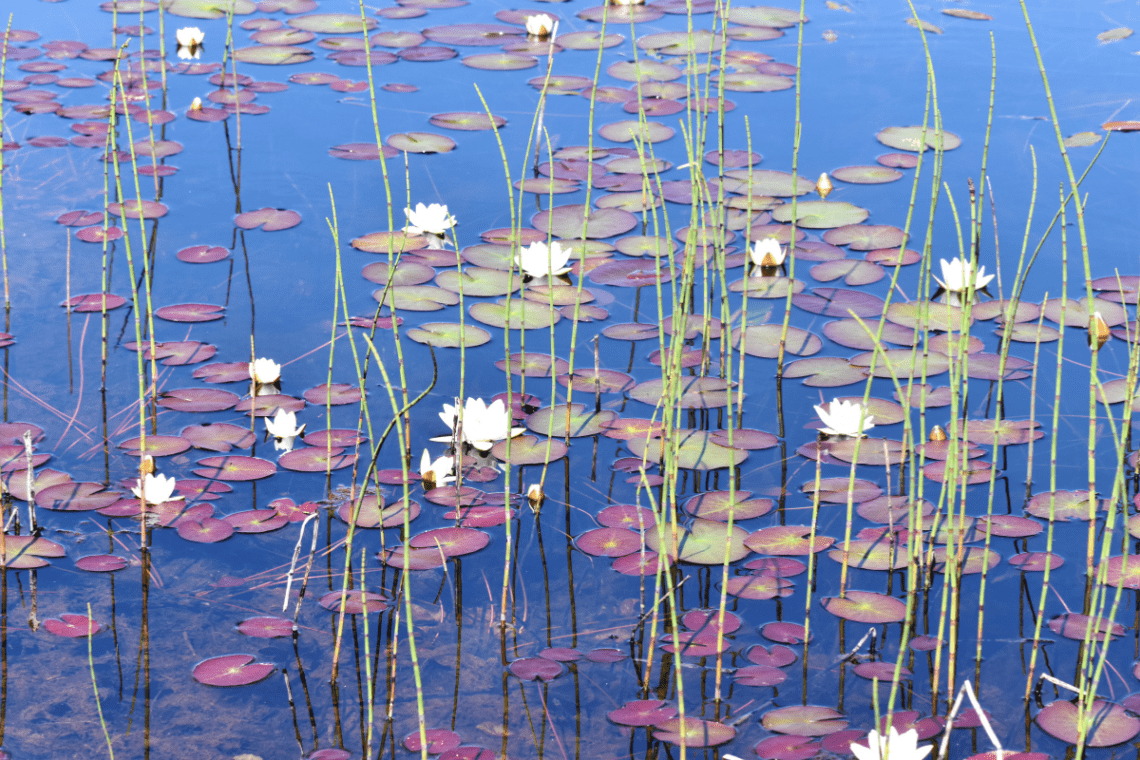
Keeping your wildlife pond’s vegetation in balance is crucial not only for aesthetic value but also for the health of the pond’s ecosystem. Proper management of plants ensures that your pond remains a haven for wildlife and prevents issues such as excessive algae growth.
Managing Marginal and Aquatic Plants
- Marginal Plants: These are essential for any wildlife pond as they provide habitat and breeding grounds for creatures such as frogs and dragonflies. It’s important to prune these plants regularly to prevent them from taking over the pond. Aim to keep about half of your pond’s edge clear to allow animals easy access to the water.
- Aquatic Plants: Submerged plants, like curled pondweed, play a key role in oxygenating the water but can grow rapidly. Regularly thin out these plants to maintain a healthy balance in the pond. Oxygenators such as hornwort and water starwort should cover no more than one-third of the pond’s surface.
Encouraging Beneficial Plant Growth
To ensure your pond supports a diverse range of wildlife, it’s important to promote a variety of plant life:
- Native plants such as water lilies are ideal as they provide cover to aquatic life and help to balance the pond’s ecosystem.
- Flowering plants like marsh marigolds attract pollinating insects, which are beneficial to the surrounding garden.
- Floating plants such as water hawthorn and frogbit allow small creatures to rest on the leaves and give the pond shade in the summer.
- Emergent plants like water mint and water forget-me-not help the insect’s larvae live in the pond and exit when they’ve transformed into adults.
Remember to position plants in suitable depths according to their preferences, with deeper zones for species like lilies and shallower margins for plants like irises. Regularly assess and adjust the balance of plant life each season to promote a thriving pond environment.
Improving Pond Ecosystem Health
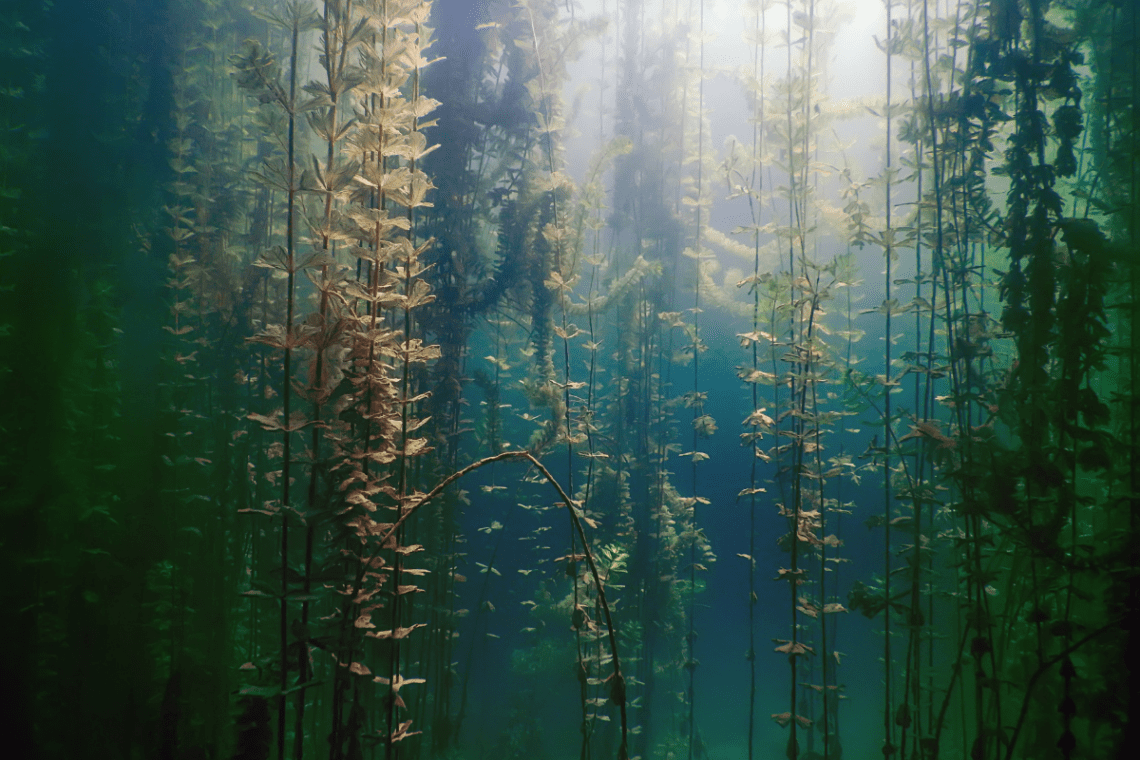
Maintaining a balanced ecosystem is critical for your pond’s health. This balance hinges on healthy oxygen levels and beneficial bacterial populations. Implementing certain measures can enhance these components, contributing to a clear and vibrant pond environment.
Boosting Oxygen Levels
Oxygen is the lifeblood of your pond’s ecosystem. High oxygen levels support aquatic life, facilitate decomposition and prevent the build-up of harmful substances. One of the most effective ways to increase oxygenation is by installing a waterfall, fountain or aerator. This equipment agitates the water surface, promoting gas exchange and distributing oxygen throughout your pond.
- Fountains or waterfalls not only add a visual focal point but can also help oxygenate the water, benefiting the pond’s ecosystem. When positioning such features, keep in mind the location related to access points and viewing angles to maximise your enjoyment without disturbing the wildlife habitat.
- You may also consider adding oxygenating plants, which release oxygen during the day. Keep in mind that these plants need to be managed to prevent overgrowth, as too much vegetation can deplete oxygen levels at night.
Adding Beneficial Bacteria and Air
Beneficial bacteria play a key role in breaking down organic matter such as leaves, uneaten fish food, and fish waste. Adding a biologically active pond supplement can introduce and support these helpful microorganisms. These bacteria improve the overall quality of the water and contribute to the breakdown of potentially harmful ammonia and nitrite.
To optimise the conditions for beneficial bacteria, ensure your pond is well-aerated. Aeration not only helps oxygenate your water but also creates an environment where beneficial bacteria can thrive. A combination of mechanical aeration, like a fountain or bubbler, alongside natural methods, such as the careful placement of pond plants, can maintain a healthy balance within the pond ecosystem.
Addressing Tree and Shade Management
Creating a wildlife-friendly environment around your garden pond goes beyond the water’s edge. The immediate surroundings of the pond play a critical role in nurturing biodiversity and enhancing the natural aesthetics of your water feature.
You should assess the trees around your pond, as they profoundly affect light levels and water quality. Shade can be beneficial, but excessive cover can reduce water temperature and inhibit plant growth.
Trim overhanging branches selectively to maintain a balance between sunny and shaded areas. Remember, some aquatic plants and wildlife species thrive with a bit of cover, so aim to create a varied landscape around your natural ponds that caters to a diverse range of species.
Future-Proofing the Pond
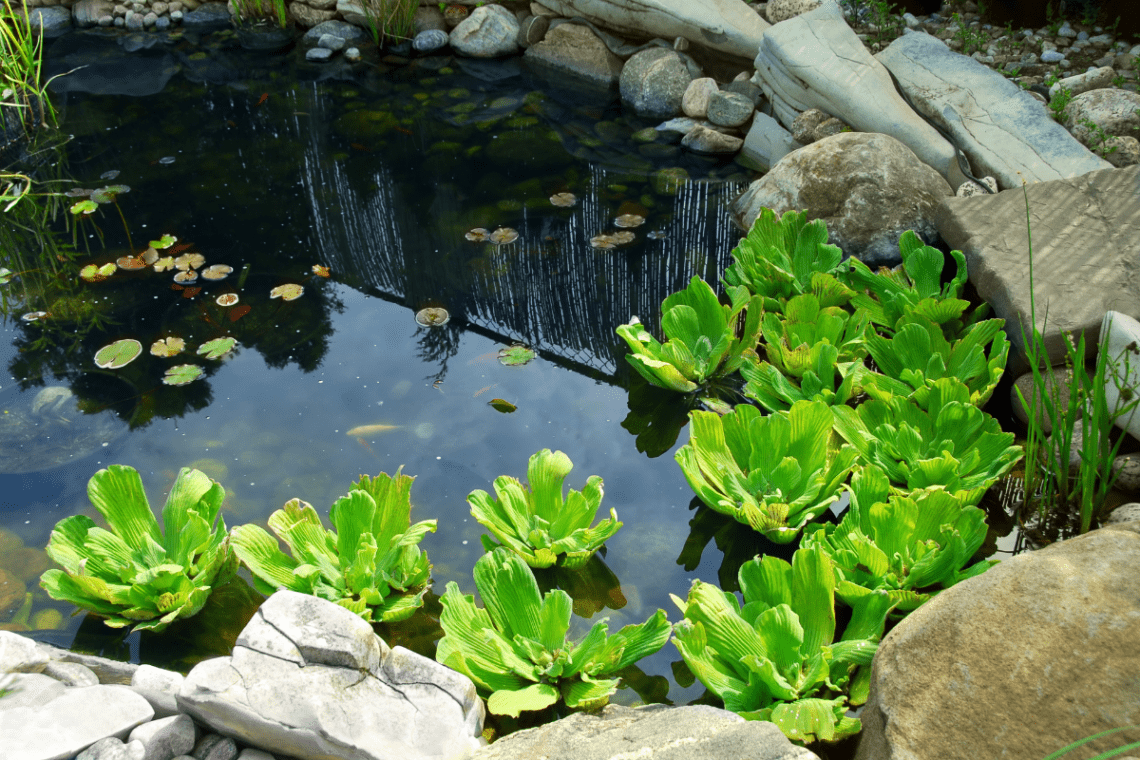
Ensuring the longevity of your wildlife pond requires proactive and adaptable management strategies. This approach not only maintains a healthy ecosystem but also controls the effects of seasonal changes and climate variations.
Implementing Seasonal Care Routines
- Spring: Cut back excessive growth to prevent decay and oxygen depletion and monitor water levels.
- Summer: Regularly maintain aquatic plant health as well as checking for and managing algae, as warmer temperatures can lead to excessive algae.
- Autumn: Clear falling leaves and thin out plants, if necessary, to avoid nutrient loading and siltation, which can otherwise foster unwanted algae growth.
- Winter: Monitor for ice and snow build-up and prevent the pond from freezing over entirely. This allows gas exchange that is vital for fish and overwintering wildlife.
Adapting for Climate Changes
Climate change can lead to more extreme weather conditions, affecting your pond’s ecosystem. In periods of increased rainfall, ensuring proper overflow mechanisms can prevent flooding and dilution of pond water, which can impact the habitat.
Conversely, during times of drought or extreme heat, maintaining water levels becomes a priority to prevent the pond from drying out. Using native plants around the pond margins can provide shade and reduce water temperature, aiding in the stability of the ecosystem despite fluctuating weather patterns.
By adopting these focussed pond maintenance actions and adapting to shifting climates, you can create a resilient habitat for wildlife in your garden pond.
Final Thoughts on Cleaning Wildlife Ponds
Cleaning wildlife ponds is essential to maintaining the biodiversity of your pond’s ecosystem, from adding native plants to adapting the conditions for plant wildlife. What’s more, you need to make sure you’re testing the quality of your tap water and trimming the pond plants.
This all leads to a water feature that is both aesthetically pleasing and a fantastic environment for pond wildlife, such as water beetles, pond skaters, and even great crested newts. At Ponds by Michael Wheat we design, build, and maintain all kinds of stunning aquatic spaces, contact our team of experts today for personalised guidance or any queries you may have.